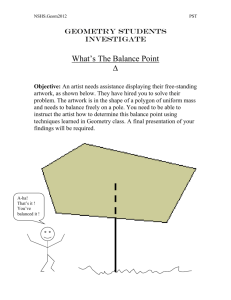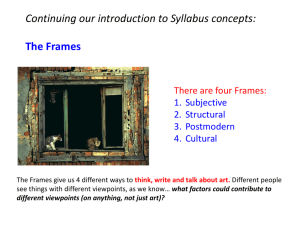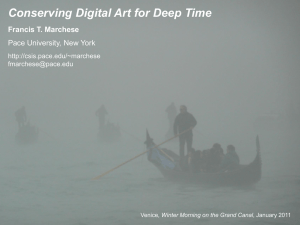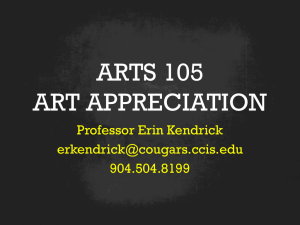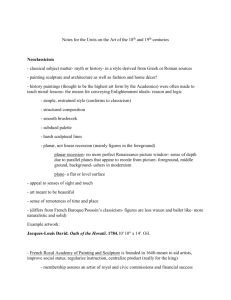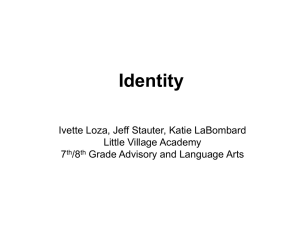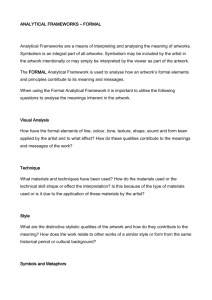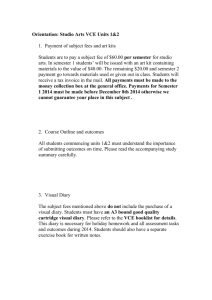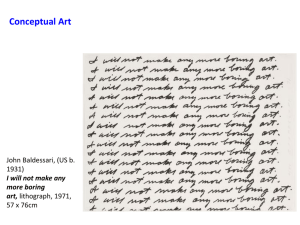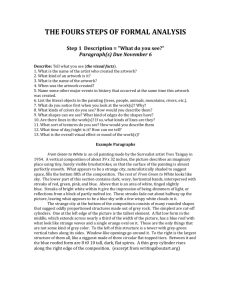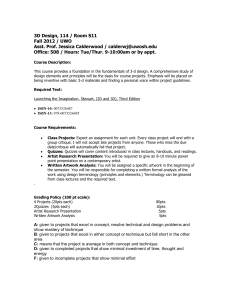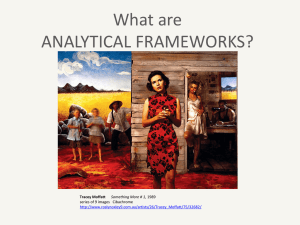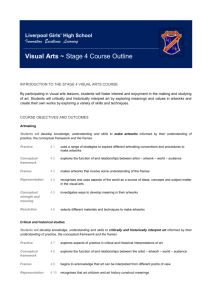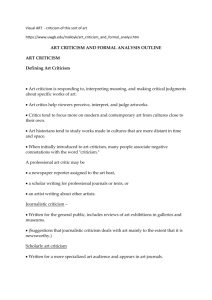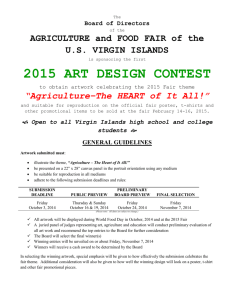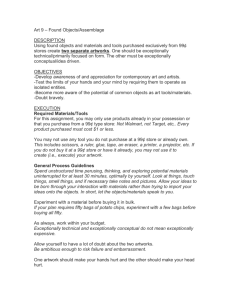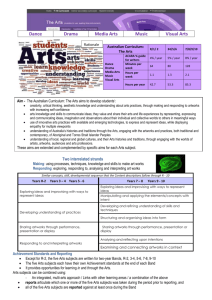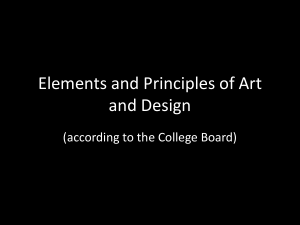WELCOME TO HSC VISUAL ARTS - General Education @ Gymea
advertisement
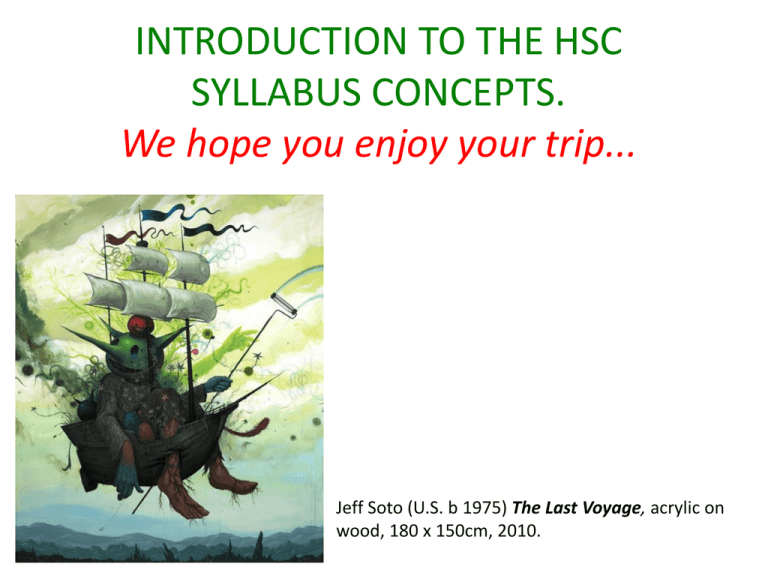
INTRODUCTION TO THE HSC SYLLABUS CONCEPTS. We hope you enjoy your trip... Jeff Soto (U.S. b 1975) The Last Voyage, acrylic on wood, 180 x 150cm, 2010. Some key Visual Arts Syllabus concepts we will look at are: • Practice; • The Conceptual Framework; • The Frames. You will become more familiar with them as we travel on… JMW Turner (U.K., 1775-1851) Rain, steam and speed, oil on canvas, 91 x 121cm, 1844. PRACTICE. In the HSC Syllabus, ‘Practice’ refers to all the content of this course. The course contains: • Art history; • Art criticism; • Artmaking. These 3 aspects form the sides of the Practice triangle. Laura Moncur (U.S. b. 1969), Practice, drawing, 2005 PRACTICE ARTMAKING ART HISTORY One side of the Practice triangle. We’ll spend time looking at the historical background to contemporary art. All art looks back to what has gone before. You will often find references to historical artworks and compositions in contemporary work. The more aware of art history you are, the more you can understand and enjoy any art. An important Art history keyword for the HSC is APPROPRIATION. <<<Jack Duncan, The transition of human experience, (Body of Work, 2012 HSC Visual Arts.) Crayon and gouache on panel, 6 panels, each panel 20cm x 30cm. Jack’s artwork is based on an appropriation of the album cover of ‘Dark Side of the Moon’ by Pink Floyd (1973.)The artwork is by English design group Hipgnosis.>> ART CRITICISM The second side of our Practice triangle. Art critics interpret and describe works for an audience. Art critics have a (hopefully) good understanding of what the artist is trying to communicate with an artwork. They have often either spoken to the artist, or done research on them if the artist is dead etc. They tend to have a good knowledge of art history, because (as we know) this helps a viewer to understand art. As part of Practice in this course, you will act as an art critic, which involves critiquing artworks, including your own. You will also look at some art critical writing, and critique that!! ARTMAKING The third side of our Practice triangle. It is made up of: • Art you make yourself; • Looking at other artist’s work: what they do; what materials, technologies, or processes they use; why they may do it. As an example, let’s look at the work of Australian sculptor Ron Mueck, who produces amazing life-like sculptures of the human figure, generally on an unusual scale. • WARNING!! NUDITY :O Part 1: http://www.youtube.com/watch?v=HYX_jVlAfk&list=PL2D885F5ED630353D Ron Mueck, (Aust.b. 1958) Boy, 1999. Mixed media including fibreglass,resin, silicone, 490 cm × 490 cm × 240 cm. CONCEPTUAL FRAMEWORK: one of the tools we use when dealing with Practice. The Conceptual Framework looks at the relationships involved with art. David Beckham can help us with this...(who would have guessed?) Brainstorm: think about a Soccer game….it’s much more than just one player and a ball. The artworld is precisely the same. It’s not just an artist and an artwork. There are many other relationships and connections involved and each effects the other. We need to consider this. Each of these circles is an agency in the artworld. WORLD The Conceptual Framework: agencies in the artworld. ARTWORK ARTIST AUDIENCE Video: Public Art While we watch, please consider the Conceptual Framework and its agencies. Listen carefully for comments on: • Audience responses to various Public Artworks; • Commissions: - this means, employing an artist to complete a certain artwork for a specific site, generally after a call-out and then a selection process. Often, a committee chooses a certain artist to do the work. A committee may include Council officers; architects; developers. • Note any particular artwork you find interesting. Brett Whiteley (Aust.19391992) Almost once, timber & fibreglass, 1968, approx. 14 metres high, outside Art Gallery of NSW, Sydney

